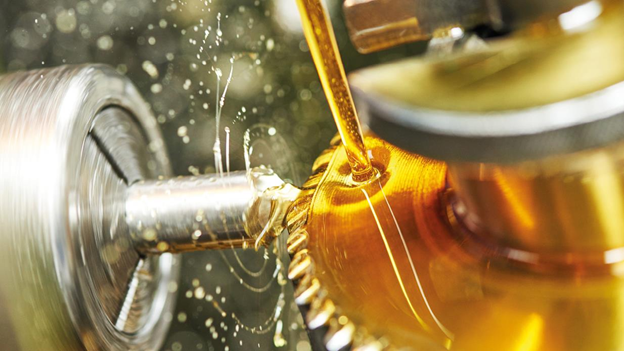In machines when two surfaces move in relative motion to each other it is important to lubricate them to ensure smooth operation. There are different types of lubricants like liquid lubricants, semi-solid lubricants and solid/dry lubricants. Some dry lubricants like tungsten disulfide, hexagonal boron nitride, molybdenum disulfide PTFE powders and Graphite are used for lubrication.
When the surfaces in motion rub against each other resistance is offered to the movement and this is called friction. It leads to wear and tear on the moving parts. Therefore a substance has to be introduced between the two moving surfaces to reduce friction. This substance is known as lubricant.
The main purpose of the lubricant is to keep the moving surfaces apart and reduce friction and the consequent destruction. The process of reducing friction by using lubricants is called lubrication. Lubricants help to prevent an expansion of the metal due to frictional heat and avoid any unsmooth relative motion. It also reduces the maintenance costs.
Dry lubricants are used where the liquid lubricant cannot secure a lubricating film. Dry lubricants are used when the operating temperature is high for the liquid and semi-solid lubricants to stay in position. Dry lubricants can be used in powder form and can be combined with binders to make them stick firmly with the metal surface.
Dry lubricants can withstand high temperatures and can be applied in continuous operating situations. They can also be used as additives in liquid lubricants and greases to increase their load-carrying capacity.
The most commonly used dry lubricant is Graphite, which can be used in powder form or suspension. It is non-inflammable and soapy to touch and can withstand temperatures up to 375° C. You can easily buy dry lubricants online and they are available in dry powder form and as aerosol spray.
Types of dry lubricants
Graphite
Graphite is the most stable form of Carbon and is iron-black or dark grey in colour. In each layer, the carbon atoms are arranged in a honeycomb lattice and the bonds between the layers are weak Van der Waals. This allows the layers to easily glide against each other. Each layer consists of atoms arranged in a hexagonal lattice and is called Graphene.
It is widely used in industrial applications as a dry lubricant. It provides dry lubrication and eliminates the need for continuous supply.
Hexagonal Boron Nitride
It is similar to graphite and is also known as ‘White Graphite’. It has a layered structure with each layer of Boron and Nitrogen atoms bonded by strong covalent bonds. The layers are held together by weak Van der Waals forces. Its monolayer is analogous to Graphene and has a honeycomb lattice structure. It is white in colour and is used as a dry lubricant.
It is used in various fields from metallurgy to cosmetic products. It can be used in nanopowder form as an additive to liquid lubricants.
Molybdenum Disulfide
It is an inorganic compound consisting of Molybdenum and Sulphur. It is silvery black and occurs naturally as a mineral ore Molybdenite and Jordisite. All forms of MoS2 have a layered structure with a plane of Molybdenum atoms sandwiched between the planes of Sulfide ions. This forms the monolayer and the layers are held together by the weak Van der Waals forces. Due to the weak forces, MoS2 has a low coefficient of friction.
It is used as a dry lubricant and very few alternatives exist that have properties like MoS2. It can provide high lubricity and stability up to 350° C in oxidising environments.
Tungsten Disulfide
It is an inorganic compound and occurs naturally as a mineral ore Tungstenite. It has a layered structure like MoS2 with a layer of Tungsten atoms positioned between two layers of Sulphur atoms. Due to its structure, It exhibits lubricating properties. It can be easily sprayed on a metal surface without using binders by using high-velocity air impingement.
It is used as a sole lubricant in applications like stainless steel fastening, mould release, precision bearing and gears in a vacuum.
PTFE (Polytetrafluoroethylene) powder
It is a synthetic fluoropolymer and is commonly known by the brand name Teflon. It has a structure in which the Fluorine atoms completely cover the Carbon-Carbon bonds. This uniform Fluorine sheath makes it non-reactive. It is hydrophobic and water or water-containing substances cannot wet it. It is used as a non-stick coating for cookware.
It can be used as a lubricant for machinery to reduce friction and wear. It can maintain self-lubricating properties at temperatures as low as -268.15° C.





Be First to Comment